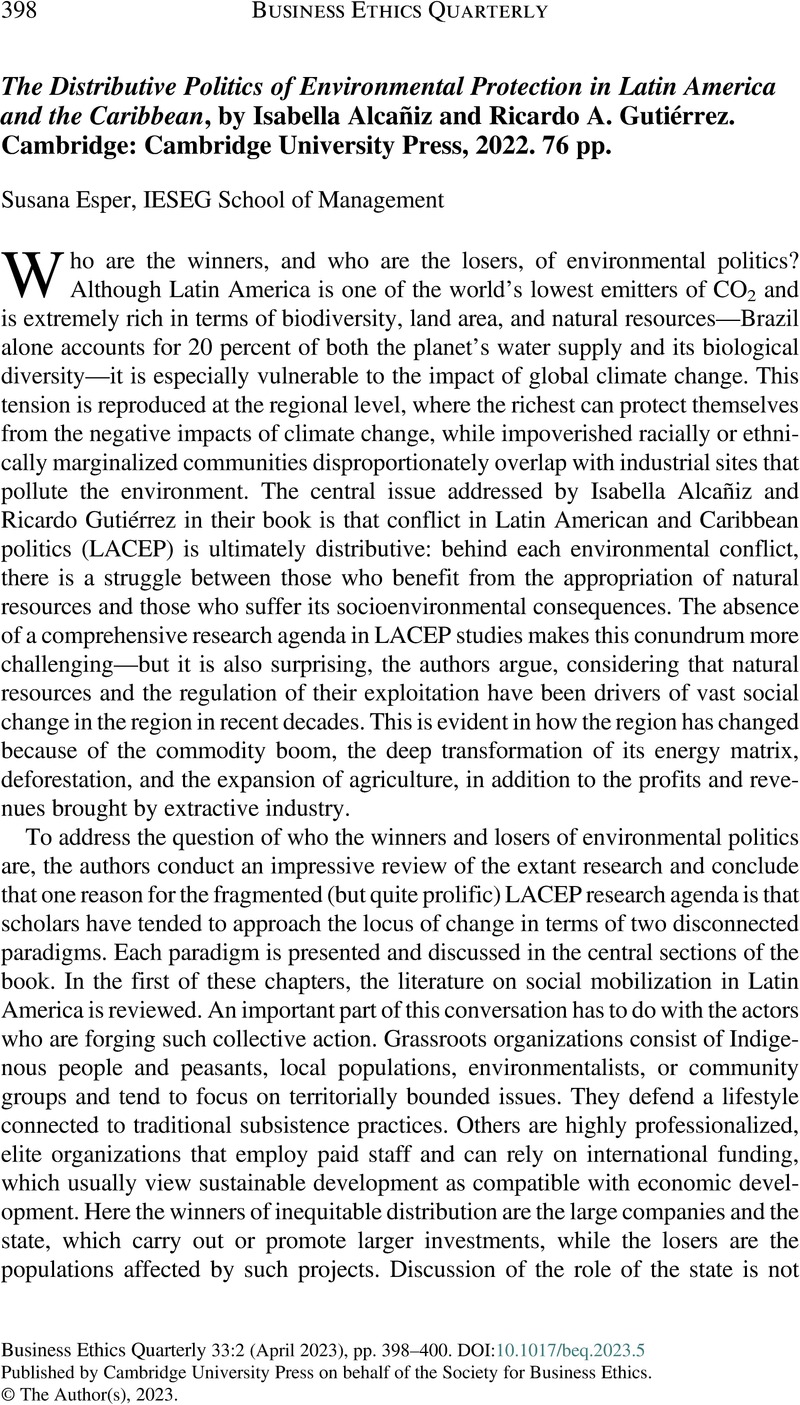No CrossRef data available.
Article contents
The Distributive Politics of Environmental Protection in Latin America and the Caribbean, by Isabella Alcañiz and Ricardo A. Gutiérrez. Cambridge: Cambridge University Press, 2022. 76 pp.
Review products
Published online by Cambridge University Press: 17 April 2023
Abstract

- Type
- Book Reviews
- Information
- Copyright
- © The Author(s), 2023. Published by Cambridge University Press on behalf of the Society for Business Ethics


